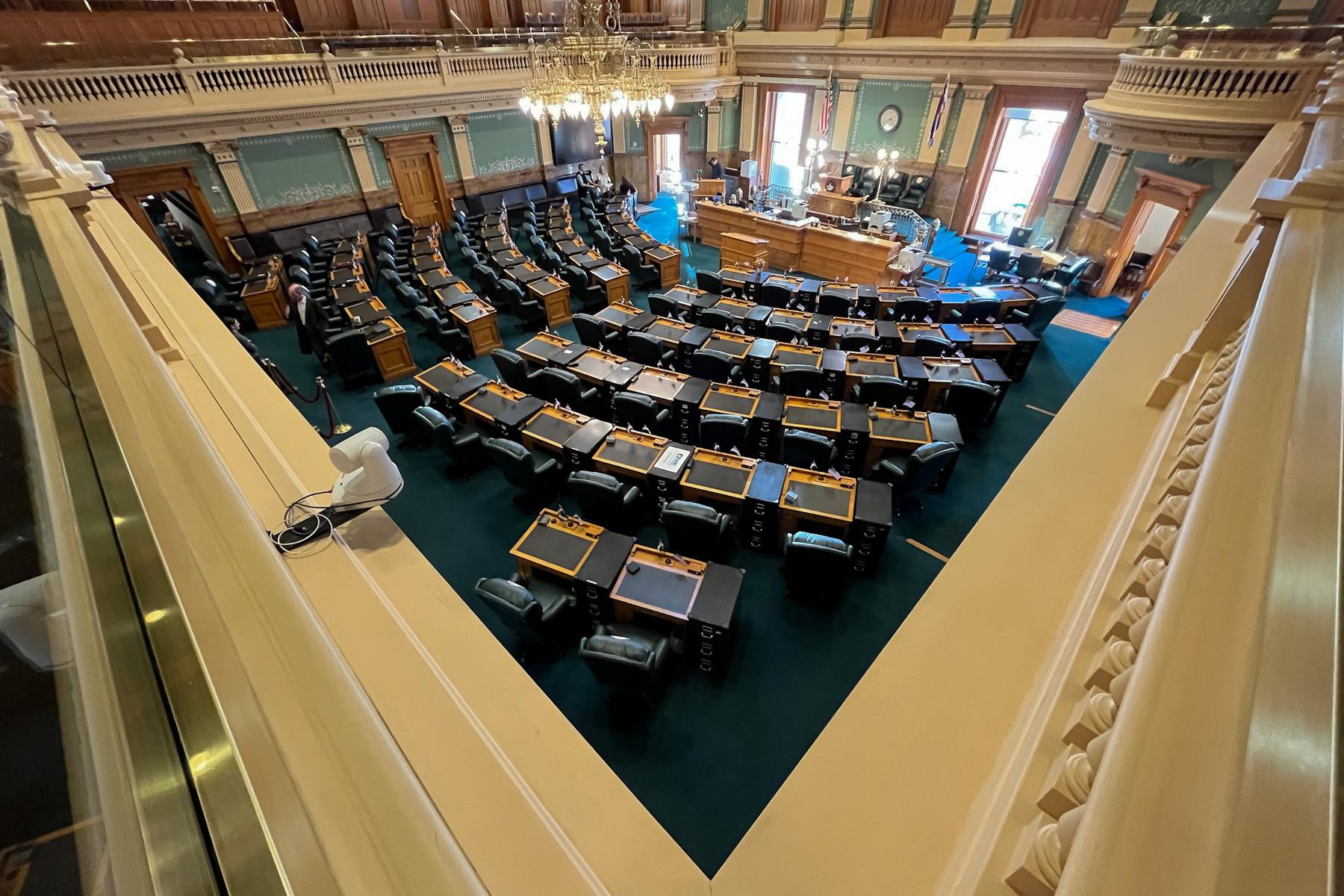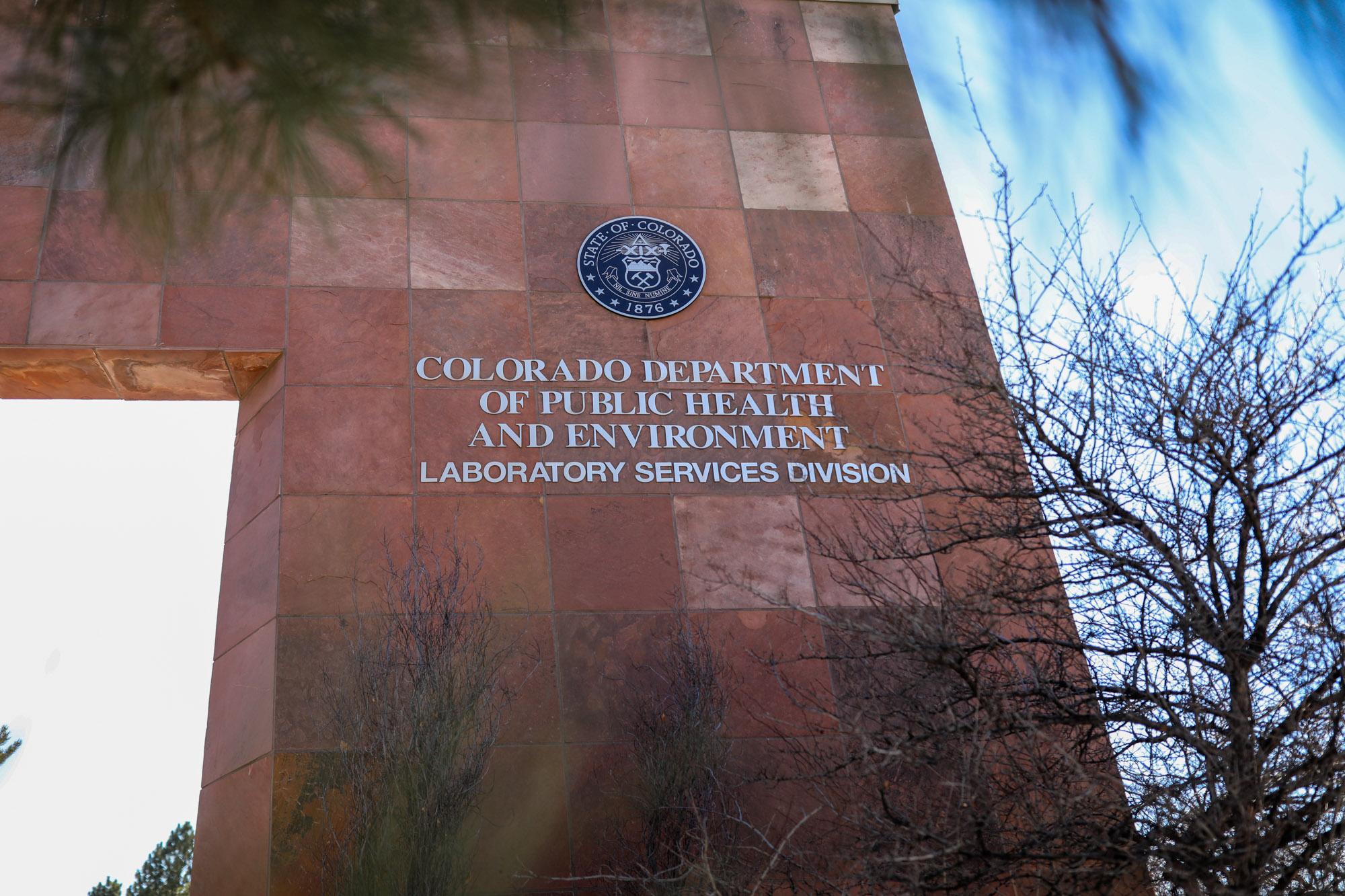
The state of Colorado has been running large surpluses — totaling billions of dollars — in recent years. That money presents an opportunity, and a big decision, for lawmakers.
The surplus must be refunded because of TABOR, the constitutional amendment that limits state spending. The most well-known way of doing that is the so-called “TABOR refund” — a payment that usually arrives after you file your state taxes.
But lawmakers have plenty of other options for spending that surplus. One popular strategy: They can create tax credits, cuts and benefits. These policies redirect money away from refunds and into incentives and support for various businesses and people.
This year lawmakers used both those options in a big way. They created a “family affordability tax credit” that could be worth thousands of dollars for low-income families with children. And they cut the income tax rate over the next decade, potentially keeping hundreds of millions of dollars in taxpayers’ wallets.
Together these measures will have the effect of reducing the state’s annual TABOR refunds for years to come, likely by more than $1 billion annually. Here are the major policies that passed the legislature, as well as a handful that failed.
What didn't pass
Let’s start with the rejected measures. Proposals for hundreds of millions of dollars of other tax credits were voted down or simply never moved forward. The casualties included tax credits and benefits for:
- Renters
- Organ donors
- Teachers who buy their own school supplies
- College textbook purchases
- Converting office buildings into residential
- Agricultural land sales
What did pass
The heaviest hitters: Social programs and tax cuts
The biggest new tax policies are aimed at individual households and taxpayers, often by providing new credits and other benefits for lower-income households, as well as a cut to the overall income tax rate.
Tax credits give people a break on their taxes. In some cases, the value of a credit is limited by the size of a person's tax obligation. But in the case of “refundable” credits, the full value of the credit can be paid out in cash — even if it exceeds a person’s tax obligations.
These new or expanded policies will redirect up to a billion dollars or more of TABOR surplus money per year.
Family Affordability Tax Credit
- Who it’s for: Parents and guardians with children 16 and under and who make no more than $75,000 for individuals or $85,000 jointly.
- What it’s worth: Up to $3,200 annually per child for the youngest children in the poorest families. The amount declines with higher incomes. The credit is refundable, so it can be paid in cash.
- How long it lasts: Tax years 2024 through 2033.
- Total impact: Up to $900 million per year in the initial years, if all eligible households collect the benefit. The value of the credit will tend to shrink in weaker economic years, when the state has less surplus money to pay for it.
- Status: Not yet signed by the governor.
Expanding the Earned Income Tax Credit
- Who it’s for: People who collect the federal Earned Income Tax Credit and/or the federal child and dependent care tax credit, with household incomes up to $60,000.
- What it’s worth: The state already offers partial matches of both the federal credits. This bill expands the amount that the state matches. The change could be worth several hundred dollars, depending on income and number of children. The credits are refundable.
- How long it lasts: Indefinitely
- Total impact: Up to $230 million per year, initially.
- Status: Signed by the governor on May 14.
- Who it’s for: Anyone paying income taxes. The more taxes paid, the greater the benefit.
- What it’s worth: It lowers the state’s income tax rate from its current level of 4.4 percent to as low as 4.25 percent, depending in most years on the strength of the economy. For someone making $100,000, that would be worth $150.
The measure has additional effects in certain years. When the surplus is especially large, it activates a sales tax cut. And when the surplus is relatively small, the new law changes TABOR refunds so they are distributed equally, rather than based on income. But in other years, the usual six-tier refund formula would still apply. - How long it lasts: Through tax year 2034
- Total impact: Depends on the year. For tax year 2026, the income tax cut would be worth about $422 million. The sales tax reduction would be $234 million.
- Status: Signed by the governor, May 14.
- Who it’s for: People 65 and older making less than $75,000 as single filers or $125,000 jointly.
- What it’s worth: Up to $800 but smaller for lower incomes. It brings back a credit that previously existed in the tax year 2022. The credit is refundable.
- How long it lasts: Tax year 2024 only.
- Total impact: About $68 million, for one year
- Status: Not yet signed by the governor.
- Who it’s for: Caregivers making less than $75,000 as a single filer or $100,000 as joint filers. That includes people in child care, certified nursing assistants, and those caring informally for children 5 or younger for friends, family and neighbors. It doesn’t include people caring for their own children.
- What it’s worth: $1,200, and it’s refundable.
- How long it lasts: Tax years 2025 through 2028
- Total impact: About $44 million per year.
- Status: Not yet signed by the governor.
Support for post-secondary students
- Who it’s for: In-state students during their first two years at a public college, community college or a technical/occupational school.
- What it’s worth: Any tuition and fee expenses left over after a student’s grants and financial aid. The credit is refundable.
- More caveats: Students must meet all these qualifications: Their household income is $90,000 or less; their GPA is above 2.5; they qualify for in-state tuition; they had no more than a two-year gap between high school completion and college enrollment; they’re taking at least six credit hours for each semester they’re claiming the credit
- How long it lasts: 2025 through 2032
- Total impact: About $38 million per year.
- Status: Not yet signed by the governor.
Financial assistance for certain low-income individuals
- Who it’s for: Low-income people with disabilities
- What it’s worth: Up to $1,200, depending on income. It partially replaces existing rebates for property tax, rent assistance and heat and fuel for those people. The credit is refundable.
- How long it lasts: Indefinite
- Total impact: About $4 million per year
- Status: Not yet signed by the governor.
AmeriCorps education award tax subtraction
- Who it’s for: AmeriCorps alumni
- What it’s worth: Alumni won’t have to pay state taxes on their Segal Americorps Education Awards. It can save them up to $325.
- How long it lasts: 2026 through 2033
- Total impact: Up to about $425,000 per year in the short term
- Status: Not yet signed by the governor.
Incentives for business and development
Tax policy is also used to attract and encourage specific business activities, from quantum computing to housing development and historic preservation. This year the legislature authorized numerous new or extended policies, although they will have much smaller fiscal effects overall than the new social support policies.
Middle-income housing development
- What it’s for: Encouraging the development of rental housing for middle-income renters. It’s an incentive for the creation of housing targeting people making between 80 and 120 percent of their county’s median income, except in resort communities, where the upper threshold is set higher.
- What it’s worth: To be determined by the Colorado Housing and Finance Authority
- How long it lasts: Credits issued from 2025 to 2029, lasting five years per credit. Housing must remain affordable for 15 years.
- Total impact: An average of $20 million annually over ten years
- Status: Not yet signed by the governor.
Apprenticeship program support
- What it’s for: Businesses in “new and emerging industry” that offer apprenticeships — which excludes building and construction trades.
- What it’s worth: The business gets credits worth $6,300 for each six-month apprentice, and up to $12,600 for a full-year apprentice.
- How long it lasts: Tax years 2025 through 2034
- Total impact: Up to $15 million per year
- Status: Signed by the governor, May 10.
- What it’s for: Encourage spending on training facilities, among other things.
- What it’s worth: Up to 50 percent of investment in facility improvement and equipment "designed to alleviate workforce shortages."
- How long it lasts: Through 2032
- Total impact: Up to $15 million per year
- Status: Not yet signed by the governor.
Creative industry community revitalization incentives
- What it’s for: Encouraging development and rehab projects that support creative industries, such as film and media production, publishing, performing arts, and more.
- What it’s worth: Up to 25 percent of the investment, no more than $3 million per project
- How long it lasts: 2026 through 2033
- Total impact: Up to $10 million per year
- Status: Not yet signed by the governor.
Rail lines in coal transition communities
- What it’s for: Tax credits for railroad companies and customers in communities economically affected by the coal industry decline
- What it’s worth: Up to 75 percent of the cost of using or operating an eligible freight rail line.
- How long it lasts: Tax years 2025 through 2037, depending on who’s applying
- Total impact: Up to $8 million per year
- Status: Not yet signed by the governor.
- Who it’s for: Quantum computing businesses
- What it’s worth: Covers some or all of the investment costs for “shared quantum” facilities and can cover losses on loans.
- How long it lasts: Tax years 2026 through 2032 for investment credit
- Total impact: Up to $8 million per year
- Status: Not yet signed by the governor.
Tax credit for historic preservation
- What it’s for: Encouraging the preservation of historic structures at least 30 years old by expanding existing incentives
- What it’s worth: Up to $100,000 for residential structures, more for commercial buildings.
- How long it lasts: Through 2037
- Total impact: $5 million per year
- Status: Not yet signed by the governor.
- Who it’s for: Filmmakers
- What it’s worth: Continues and expands a tax credit for film production, worth up to 22 percent of the production company’s expenditures.
- How long it lasts: Through 2031
- Total impact: Up to $5 million per year
- Status: Not yet signed by the governor.
- What it’s for: Encouraging people to protect land they own from development by creating a conservation easement. It extends an existing program.
- What it’s worth: Up to 90 percent of the value of the land, partially refundable
- How long it lasts: Through 2031
- Total impact: Estimated $3.5 million per year
- Status: Signed by the governor, May 20.
Agricultural stewardship credit
- Who it’s for: Farmers and ranchers
- What it’s worth: Up to $300,000, refundable. It’s an incentive for the use of stewardship practices such as rotating crops and use of compost.
- How long it lasts: 2026 through 2030
- Total impact: Up to $3 million per year
- Status: Not yet signed by the governor.
Contaminated land income tax credit
- What it’s for: Cleaning up contaminated land
- What it’s worth: Up to $1.5 million per project
- How long it lasts: Extends existing program through 2029
- Total impact: Up to $3 million per year
- Status: Not yet signed by the governor.
Employee-owned business income tax credit
- Who it’s for: Employee-owned businesses
- What it’s worth: Up to $50,000 per year, depending on business costs. It’s for businesses that have been wholly or partially employee-owned for less than seven years.
- How long it lasts: 2025 through 2033
- Total impact: Up to $1.5 million per year
- Status: Not yet signed by the governor.
Extending the Rural Jump-Start Program
- What it’s for: A program to support rural business investment is set to expire. This bill extends it for several years, including associated tax credits.
- What it’s worth: The tax credits can be worth up to 100 percent of the income tax bill and 100 percent of the investment for new business activities in the designated area, as well as a credit worth 100 percent of employees’ income taxes.
- How long it lasts: Extends tax credit expiration through 2030
- Total impact: Up to $1.1 million per year, plus additional spending on grants
- Status: Not yet signed by the governor.








